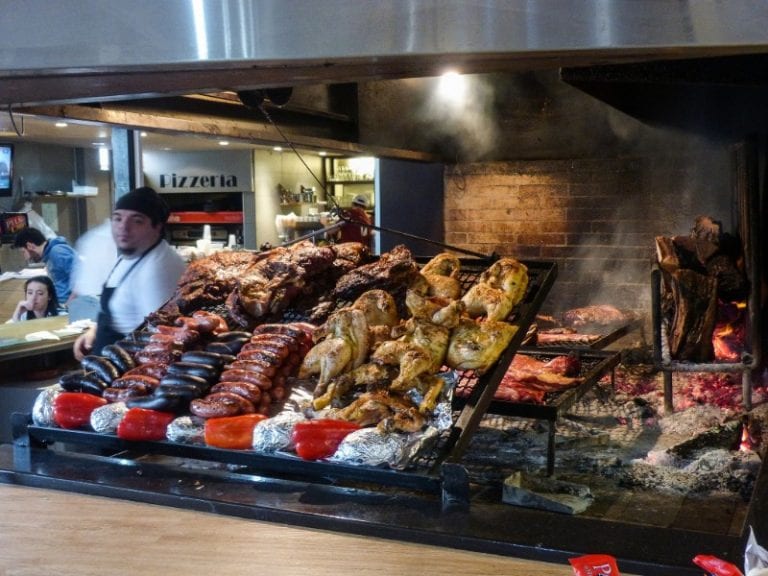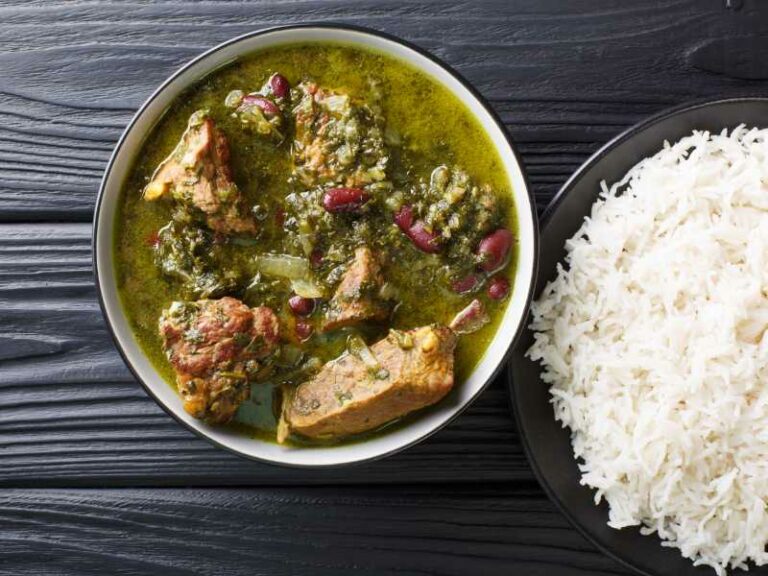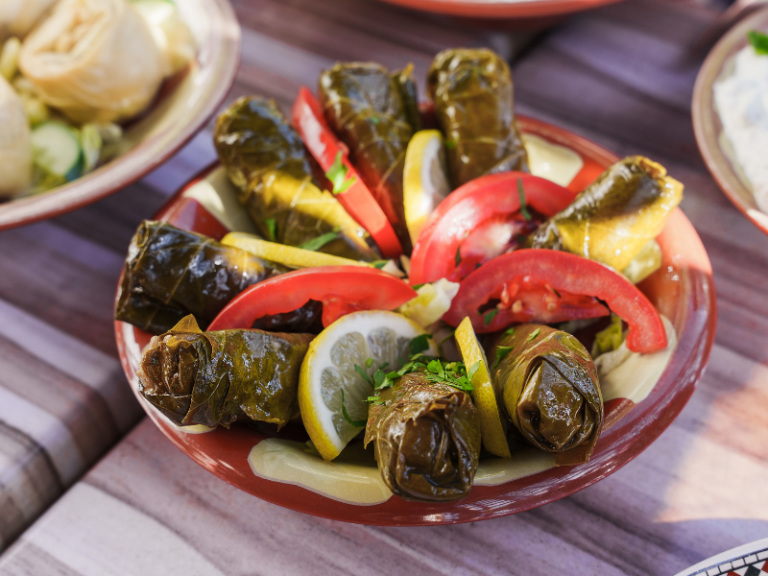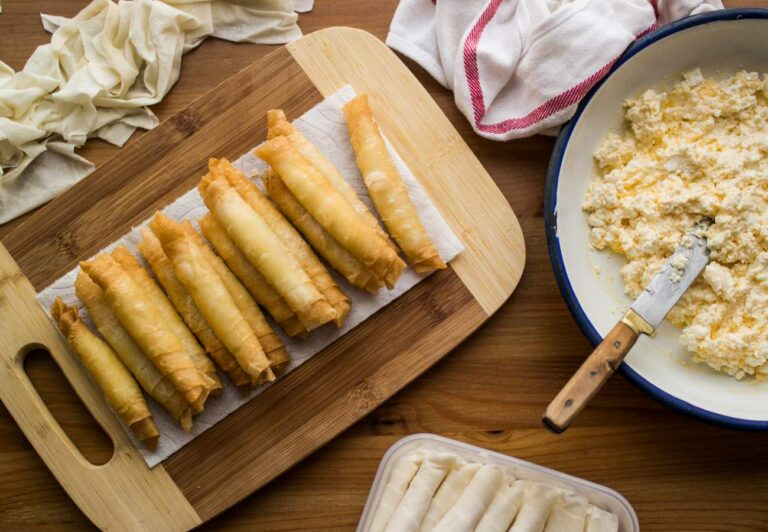Yemeni Foods: 12 Traditional Dishes of Yemen
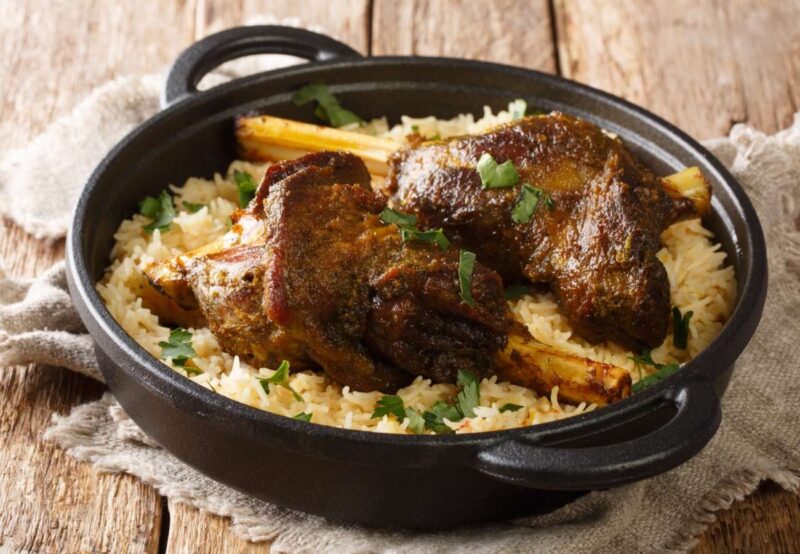
Yemen is located in the Middle East at the Southern edge of the Arabian Peninsula. On its north is the country of Saudi Arabia and the country of Oman is located to its east.
The west and south borders of Yemen are entirely coastal. The climate is dry, hot and humid. Over half of Yemen’s landscape is desert. Islam is the main religion and Arabic is spoken though there are several dialects.
In addition to the mainland, Yemen’s territory includes several tiny islands in the Red and Arabian Seas. The most well-known Yemeni island is Socotra which is a World Heritage Site due to its rare plants like the Dragon Blood tree, birds and reptiles that cannot be found anywhere else in the world.
Yemeni cuisine uses a wide range of spices, hot peppers and sauces. The most eaten meat is lamb, followed by goat and chicken. Pork is not eaten at all, due to religious beliefs. Fish is popular along the coastal regions.
Vegetables and meat are usually brought and consumed as fresh as possible. Many dishes are accompanied by rice or flat breads. Potatoes, and grain are staple foods.
Fruit and nuts are normal additions to not only sweet dishes but savory dishes too. As well as being a producer of honey, it is used in many dishes.
Martabak
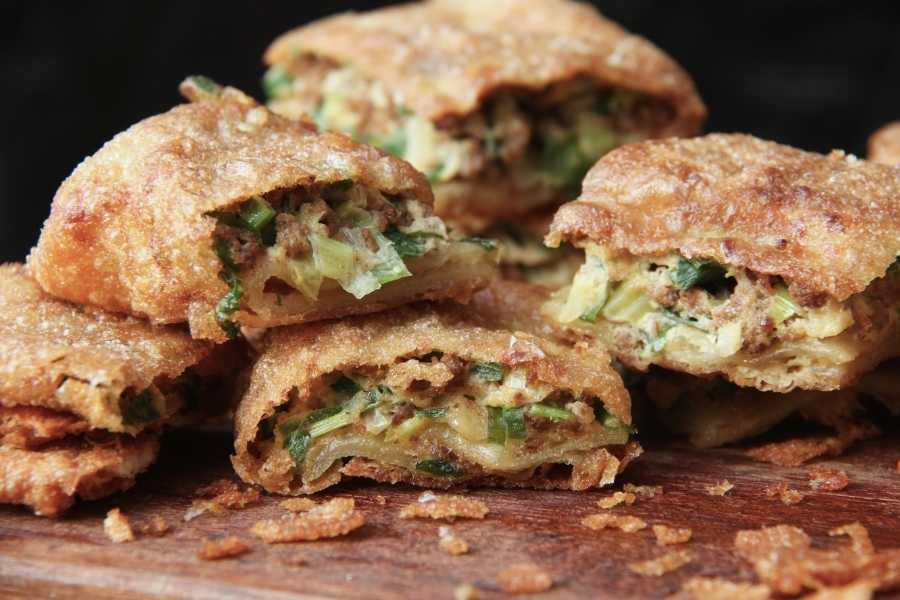
Martabak is a filled pan-fried bread. The flat bread can be sweet or savory. Typical fillings are cheese, eggs and meat. The dough is rolled out, filled and folded all before cooking. Martabak is considered a street food.
Though Martabak is popular in countries like Indonesia, which it is sometimes credited to, it originates from the Middle East.
Malawach
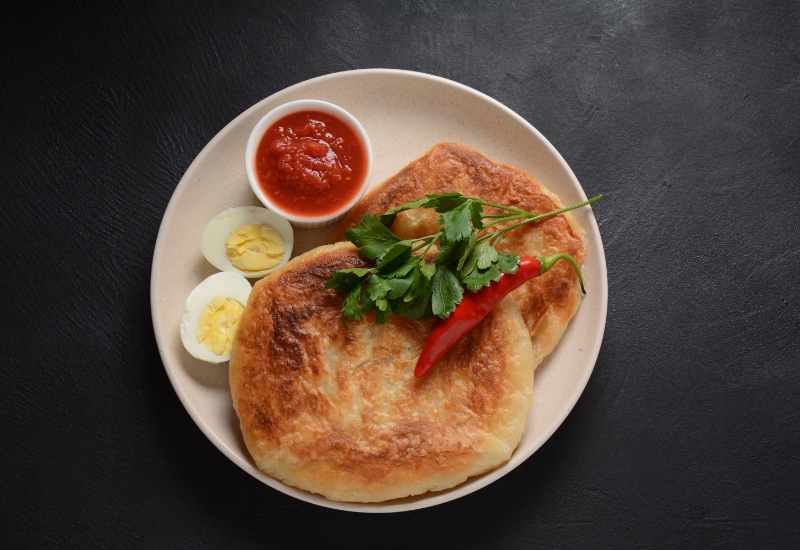
Malawach is a pancake that is common in Yemenite Jewish cookery. It is a toasted cake, which can be eaten sweet with honey, or savory with hard-boiled egg, tomato honey and yolk (spicy). It can also be served as a wrapper to house many ingredients such as boiled eggs, hummus, fried onions, eggplant, pickles and much more.
Tabeehk
Tabeehk is a vegetable stew. Potatoes and vegetables like okra and eggplant are cooked in a tomato sauce until tender. Using Hawaij in the stew is popular. Other ingredients used to flavor Tabeehk are onions, garlic and pepper. The stew is cooked to the preferred thickness. It is served over rice.
Mandi
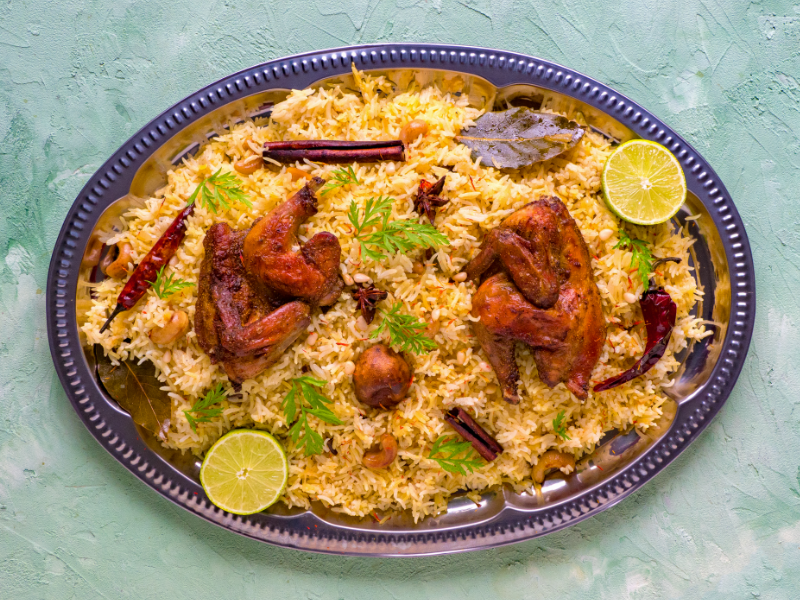
Mandi is a dish consisting of meat and rice cooked in an Arabic blend of spices. Basmati rice is spiced with Hawaij and the meat, either chicken, lamb or goat are cooked traditionally in a clay oven called a tandoor. Chicken Mandi uses entire chicken legs and is served with sliced cucumbers and tomatoes.
Mandi comes from the Hadhramaut region of Yemen where Shibam, the city of mud skyscrapers can be found.
Haneeth
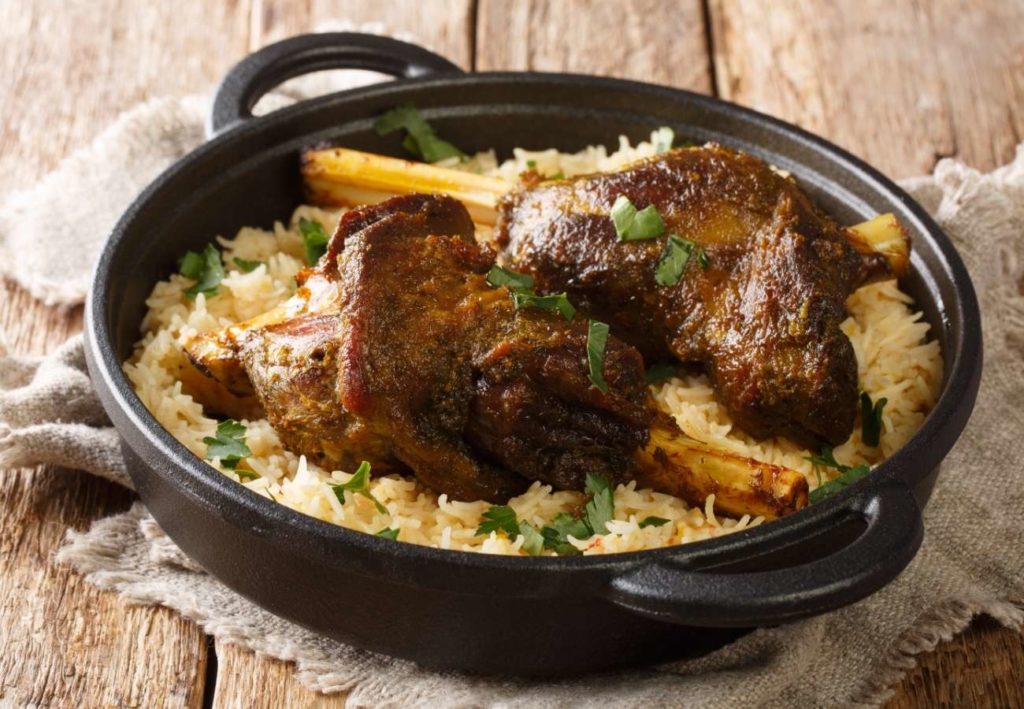
Haneeth is a dish of slow roasted lamb. The lamb is marinated in Hawaij, a traditional Yemeni spice mix. The mix consists of spices like cumin, turmeric and cardamom. The meat is then slow roasted until it is very tender.
This is a celebratory dish which is served at festivities like weddings and is usually served on basmati rice.
Shafoot
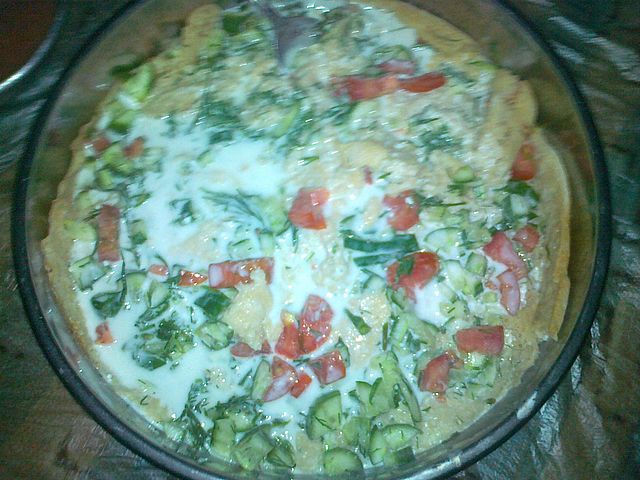
Shafoot is a savory, spicy yogurt sauce. Yogurt, tomatoes, garlic, chili, salt and cucumbers are finely blended. Because it contains yogurt, it is served col. In a hot climate like Yemen, it has a cooling effect.
Shafoot has several other spellings including Shafout and Shafuut. Other dish variations include mint and pomegranate. It is a served as an appetizer with pita bread. Shafoot is popularly eaten during Ramadan, the month-long period of daily fasting when food is eaten only before dawn and after sunset.
Zurbian
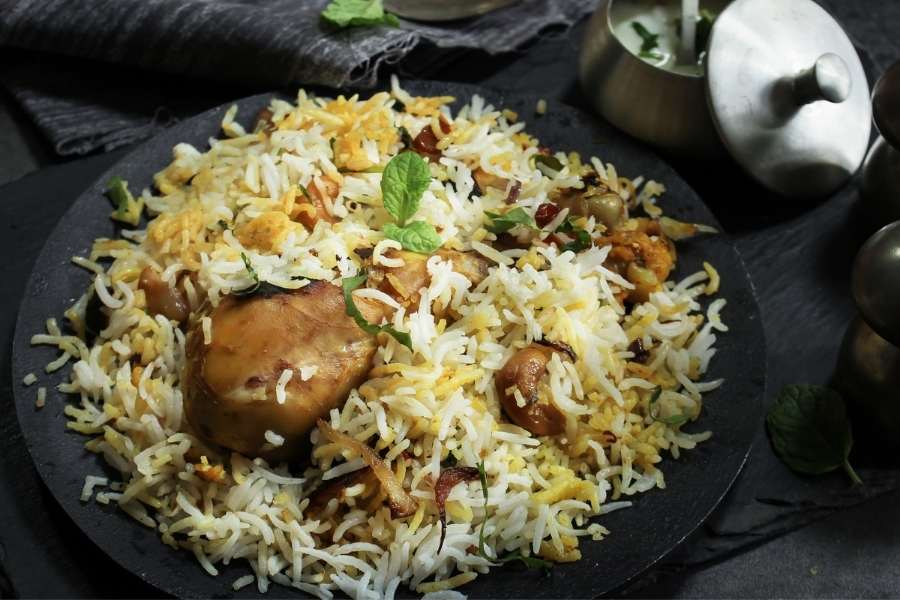
Zurbian is a dish of rice and meat mixed with spices and vegetables. The meat, usually lamb is cooked in a spiced tomato and yogurt sauce. Spiced rice is placed over the meat to cook. All the spices in this dish gives it an attractive array of different shades of red, yellow and orange.
Zurbian is often prepared for special occasions. The rice can be dressed up by adding fruit and nuts.
Areeka
Areeka is a sweet dish made from bread, dates, honey and cream. A sweet dough is made and cooked in the stove top before crushing it into little pieces. The bread, crushed dates and cream are layered in a dish then topped with honey and sometimes nuts. It is eaten for dessert.
Masoub
Masoub is a banana bread pudding, though its nothing like traditional banana bread or banana pudding. Very ripe bananas are crushed and mixed with ground up bread, honey and spices. It is eaten for breakfast and dessert. As a dessert it is garnished with dates, nuts and cream.
Saltah
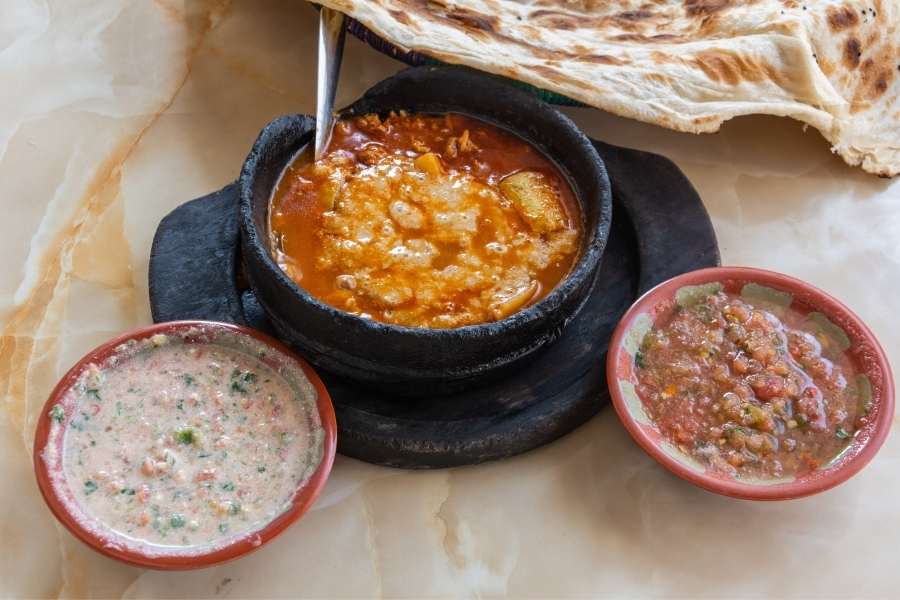
Saltah which is considered the national dish of Yemen, is a meat stew. Meat and vegetables are cooked together then topped with a sauce called Hilbeh. To make Hilbeh, fenugreek, cilantro, tomatoes, mint and garlic are blended or whipped until the sauce is fluffy.
Common additions are potatoes and rice. Meat is sometimes omitted. Saltah is served with flatbreads.
Aseeda
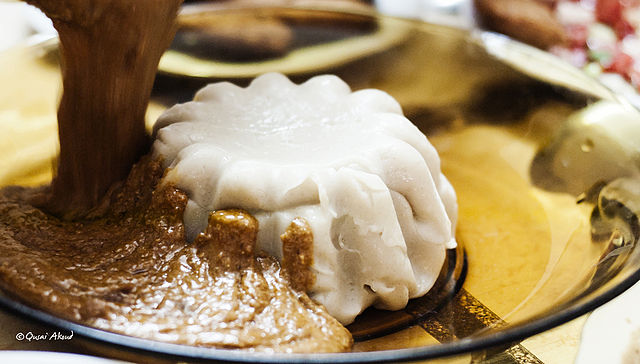
Aseeda is a flour dumpling served with broth or topped with honey and butter. A flour mixture and butter are cooked in hot water until it forms a paste then removed from the heat and mixed until the paste forms a smooth dough. The dough is returned to the pot with water and cooked again. The dough is mixed a second time, making it even smoother than the first time.
On an oiled plate, the dough is folded several times by pulling the sides of the dough into the center then flipped over revealing a perfect dome shape. A well is pressed into the middle of the dough and broth is scooped into the well. The broth is made from meat and vegetables which is then strained, leaving behind a smooth liquid. It is sometimes served with Hilbeh.
Lahoh
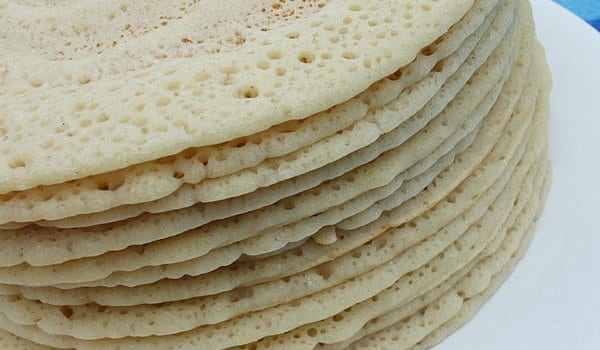
Lahoh (also known as canjeero, anjero or laxox) is a type of bread, similar in appearance to a pancake, which forms the basis of many Yemeni dishes. Lahoh and Ethiopian Injera are cousins.
It is commonly served drizzled with butter or ghee, and sugar. It is also often eaten for lunch or dinner, usually accompanied by a curry, meat stew (maraq), soup, or liver and onions.

